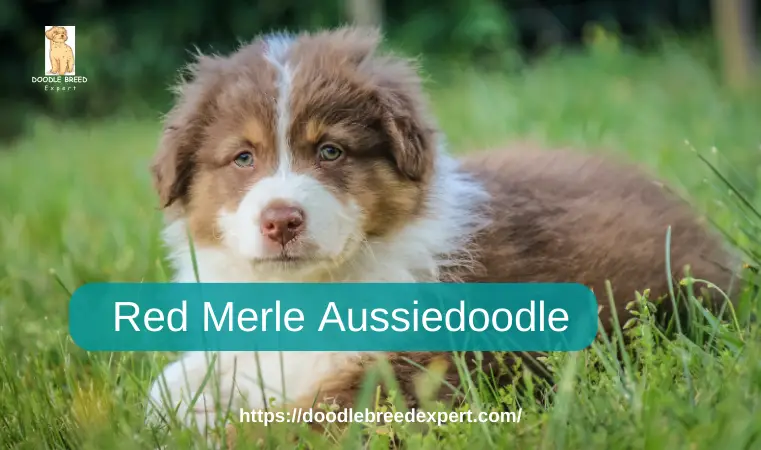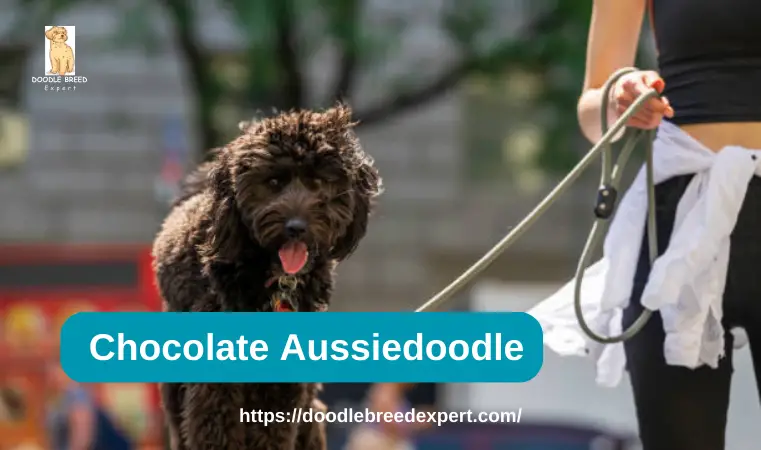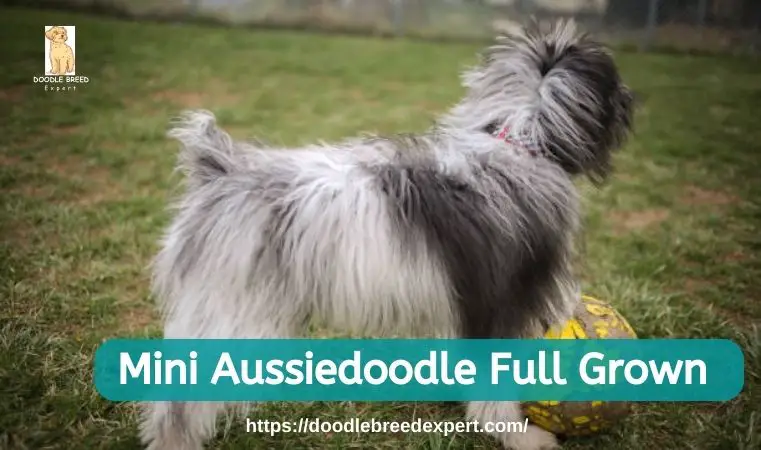Aussiedoodle is one of the most popular crossbreeds. It is also known as an Aussiepoo dog, crossing the Australian Shepherd with a Poodle. Moreover, other notable points of intelligence and a good-natured disposition in this mix render it more appealing to the supporters of the specific breed. It is generally inherited from a low-shedding poodle, making it allergy-friendly, and has various colors and patterns. However, all prospective owners of such hypoallergenic breeds should be forewarned that adding any pet can trigger allergic reactions, and to sensitive individuals, sporadic shedding is most common.
Socially gregarious, active, intelligent, and easily trained, it would stretch the imagination to say that an Aussiedoodle isn’t a high pleasure-seeker with abundant adaptability. All these combined traits make an Aussiedoodle great for most dog sports and activities. There are three sizes: Mini Aussiedoodle, Australian Shepherd, and Miniature Poodle. A full-grown Mini Aussiedoodle adult weighs 15 to 25 pounds and stands 12 to 18 inches. The bigger variant, from a standard Australian Shepherd and Poodle cross, can garner a weight between 40 and 70 pounds. Toy Aussiedoodles weigh 15 pounds according to weight.
Despite being a designer dog, most Aussiedoodles end up in a shelter. Potential owners are usually coaxed into adopting or rescuing these dogs. Various rescues, such as those worked on by organizations specializing in Poodle hybrids, or “Doodles,” aid in the more upscale adoption of these fun and energetic dogs. All in all, Aussiedoodles are a wonderful blend of charisma, brains, and energy, and they need a constant mental game and exercise routine to keep them happy and healthy.
Aussiedoodle History
Aussiedoodle is a mix bred with an Australian Shepherd and Poodle cross, bred with intent from the late 1990s and early 2000s. Though this cross probably existed years ago by accident, modern designer breeders wanted to combine the smarts, fun, and excellent looks into the mix from both parent breeds. The endearing qualities of the Aussiedoodle make it a favorite among dog lovers.
Although bred as a designer breed, many Aussiedoodles end up in shelters and rescue organizations. One may consider adopting an Aussiedoodle from these organizations or a rescuer specializing in the Australian Shepherds or Poodles breed. Most of these rescue operations accept mixed breeds and may be able to assist an individual in finding them loving homes. Adopting an Aussiedoodle gives another dog a chance at life and provides one with great company that is pleasing and utterly intelligent.
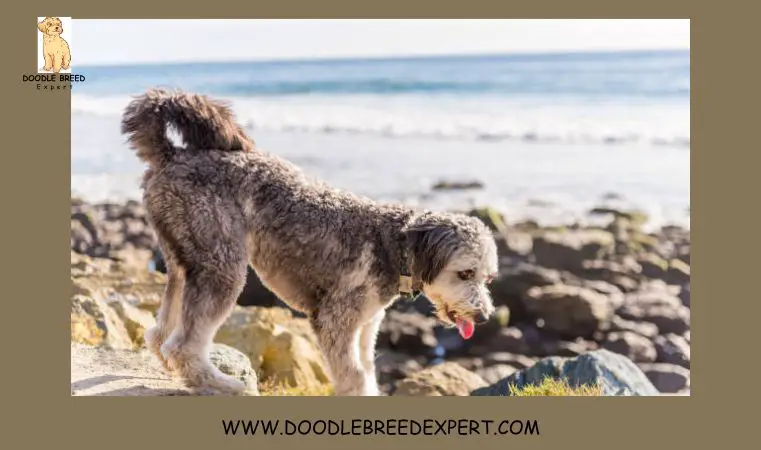
What is the size of Aussiedoodle?
Aussiedoodle is a relatively new breed with size variance doors due to the significant variance in sizes of Poodles, from miniature to standard. The only actual size similarity in both breeds is small to medium. On average, Aussiedoodles are expected to weigh 25-70 pounds and stand 10-15 inches at the shoulder. However, Aussiedoodles vary between smaller and larger sizes, depending on parentage and specific breeding practices.
Aussiedoodle Personality
It would be beneficial to learn about the personality traits of the designer breeds Australian Shepherd and Poodle to get a perspective about the optimal training approaches for an Aussiedoodle.
Australian Shepherd: Originally meant for herding, they are an athletic and agile dog. They possess a strong work ethic and are loyal and brave but may be somewhat standoffish to strangers. When deprived of appropriate work, they may get too territorial or destructive or herd anything that moves. Regular grooming of a slightly wavy double coat is a must.
Initially working as water-fowl retrievers, poodles have thick, curly coats that must be maintained, such as brushing and clipping. Poodles are very smart and treacherously good-natured with people, and other dogs are generally loyal to their families. Besides, they are very active and agile, requiring several regular opportunities to expend their pent-up energy.
Aussiedoodles inherit a mix of those, depending on which eligibility characteristics the parent breeds. Generalized personality characteristics of the Aussiedoodles include:
- Exceptionally intelligent and might be quick learners
- Agile, athletic, and dynamic
- Engaging in water
- Tend to bunch people and objects
- Fun-loving and playful
- Warm, friendly temperament with people and other dogs
- Very loyal to their owners
- Sometimes over-protective and over-territorial
- Likelihood of Testing Boundaries
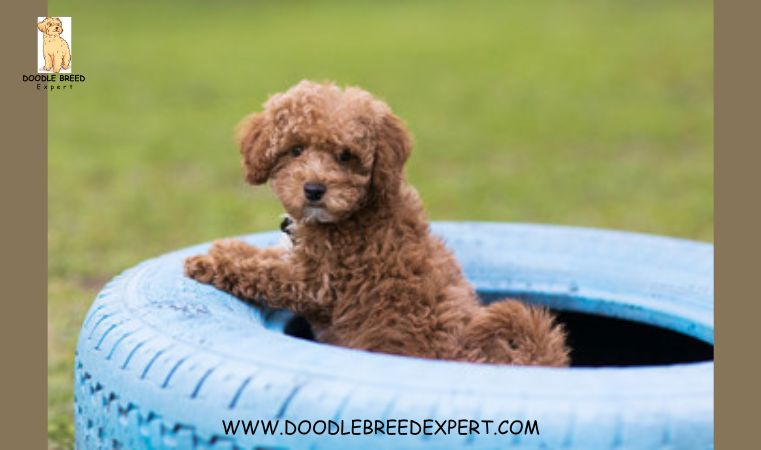
The Aussiedoodle will be bored and destructive if he’s not given something to do to keep his mind and body active. Here are a few ways to keep an Aussiedoodle happy and well-behaved:
- To acquaint them with new people, pets, and environments to guarantee proper socialization.
- Daily regular exercise, such as running or jogging.
- Take them on long walks.
- Engage them with puzzle toys for enrichment.
- Engage them in dog-centered sports and any other kind of activity.
Understanding these traits and meeting the exercise and mental requirements will help ensure your Aussiedoodle is a happy, well-balanced buddy.
Aussiedoodle Health
Aussiedoodles are a relatively healthy dog breed, resulting from crossbreeding the loving Australian Shepherd and Poodle parent breeds. Like their parent breeds, they share a few health snags. Proper care and regular veterinarian examinations are required to keep these dogs healthy. Common health problems which may arise in Aussiedoodles are:
Hip dysplasia.
Hip dysplasia can be a congenital disability that will render the animal unstable in its hip joint. It will be arthritic, painful, and limit mobility. Dogs of more giant breeds will likely suffer from this defect, revealing a bunny-hopping gait, reluctance to move, and hobbling. Such a condition can be managed through regular veterinary doctors’ visits and maintaining the ideal weight range on the animal’s body.
Progressive Retinal Atrophy (PRA)
PRA is a progressive degenerative disease of the eyes where the retinas eventually deteriorate, leading to vision loss. It causes night blindness first and, in some cases, can develop to complete blindness. Early detection through regular eye exams is critical in managing PRA effectively.
Ivermectin Sensitivity:
Ivermectin sensitivity is an excellent condition found genetically in herding breeds such as the Australian Shepherd; it causes a bad reaction to medications containing ivermectin, damaging the central nervous system. Such symptoms include tremors, disorientation, or possibly a coma. Owners should talk with their vets to find safe flea and parasite control alternatives for at-risk dogs.
Cataracts:
Cataracts cause an opacification of the ocular lens, resulting in blindness or poor vision if not corrected. In dogs, most cataracts are age-related, but many different breeds have been shown to have hereditary or even juvenile-onset cataracts. Routine ocular exams will help with earlier detection. Sometimes, eyes require surgery to restore or maintain vision.
Many of these risks can be avoided by checking the vet regularly and giving suitable feed and exercise. Owners should be sensitized about the health needs of their Aussiedoodle and consult a vet if their appearance is worrying to ensure a healthier life for their furry counterparts.

Aussiedoodle Care
Regular vet visits are a vital necessity for your Aussiedoodle. The vet can help with a care plan for your pet and early detection of problems.
Aussiedoodles are very active and may quickly become overweight. Allow about 30 to 60 minutes per walk, active playing time, and more through shorter walks to keep them in a healthy weight and to prevent boredom.
Regular ear checks are essential in looking for ear parasites and debris. Clean the ears as recommended by your veterinarian to prevent infection. Keep your pet’s nails trimmed for comfort in movement. This is usually done monthly or more often, depending on the dog’s activities and how much a dog’s nails naturally grow. The groomers can help you learn what this means for your dog’s nails in terms of length so you can also monitor your dog’s health.
Brush their teeth: Aussiedoodles, especially the miniature ones, are easily prone to diseases of the teeth and gums. They need to brush their teeth from time to time in order not to contract such diseases. Kindly follow the specific vet instructions on how to brush and what adjustable dental care dog products to use correctly.
Guide to Grooming an Aussiedoodle
Maintenance of an Aussiedoodle dramatically differs from that of breeds with short hair. The coat is in curlier or wavier forms and needs trimming to the desired look with constant grooming.
Skin Care
Owners of Aussiedoodles should look for genetic conditions expected in the Poodle breed, such as sebaceous adenitis: over scaling, flaking, or thickening of the skin. If these symptoms start developing, checking with a veterinarian is best. Bathing is needed to maintain cleanliness and pleasing odor, depending on activity and the environment.
Coat care.
Each Aussiedoodle will have special grooming needs according to their coat. Dogs with a curl type closer to that of a Poodle will need more frequent trimming and grooming than those with a texture more like an Australian Shepherd. Use a slicker brush for mats and tangles, especially on long-haired dogs. Regular brushing will help keep the coat healthy and shedding to a minimum.
Ophthalmology
With very few exceptions, the only eye care an Aussiedoodle will require is cleaning a dog’s eyes and the hair around them. Use the clippers to clip the hair around their eyes clean so that it doesn’t block their vision. Contact your veterinarian if you notice any changes in their eyes or the surrounding area.

Ear Care
Because of this, Aussiedoodles might like to swim from their Poodle inheritance. Following any swims or baths, their ears should be wiped out with an appropriate dog cleaner. Moist ears can potentially produce ear infections, so do your best to dry them. General ear health maintenance and preventing any ear issues involve regular ear checks and ear cleaning.
These perfect dog grooming behaviors maintain the Aussiedoodles’ health and beauty. Besides general well-being, regular grooming will bring out the beauty of these groomer dogs.
Aussiedoodle Diet
Aussiedoodles do best on small-to-medium-sized dog diets only. They tend to look just like their parent breeds—overweight when overfed. Therefore, they should be fed systematically rather than leaving food out all day. Treats should also be given sparingly.
An Aussiedoodle, like any other dog breed, goes through different nutritional needs at any age: puppy, adult, or senior. A visit to the vet’s office should help diagnose the best diet for Aussiedoodle, including their weight, activity levels, and overall health. Such individual requirements usually turn out to be quite broad, so personalized advice from a vet will ensure that your dog gets appropriately nourished for their needs.
The grooming of an Aussiedoodle and the coat color
The Aussiedoodle coat patterns and colors will likely vary, presenting an exciting mix of an Australian Shepherd and a Poodle. Coats of hues are variable with an Australian Shepherd, from blue merle, red merle, black and red tri, black and tan, party, sable to sometimes solid, even sometimes the richness of the palette reflected in their colors.
An Aussiedoodle’s coat is usually wavy to somewhat curly, and its Poodle lineage is more characteristic than an Australian Shepherd lineage. A few may have relatively short hair, making the dog more appropriate for those allergic, but this cannot be guaranteed.
The texture of the coat also somewhat defines how they tolerate weather. In general, Aussiedoodles bear cold weather relatively better than breeds like Chihuahuas. Nevertheless, provisions should be made for harsh winter months to preserve comfort and health. Good overall health and the general look of the coat, be it in texture or length, are carried with regular grooming.

How to Train an Aussiedoodle
This will most likely mean training with something mentally stimulating—without this, they will likely get bored when performing the same routines of exercises with you. Training should be lots of fun and seem exciting to you. Here is an in-depth guide on training your Aussiedoodle.
“Look” Cue and Attention to Name:
This will train your Aussiedoodle that when you say his name or use the cue “look,” he should focus on you. It is essential for distracting from most of the distracting behaviors, such as herding and hunting instincts Aussiedoodles may have.
Manners on Leash (The “Let’s
You have to aim for the walk with a loose leash by your side. This way, you assure yourself that you teach the dog not to follow or run after moving objects and people.
Use “Leave it” Cue:
A good emergency recall cue means your dog will come when called, even under distraction. Your “leave it” Cue will help him ignore distractions like joggers, cyclists, cars, and small animals.
Be Still and Know
These commands help to manage impulses—essential for a high-energy dog like the Aussiedoodle—such as jumping on people. Oh, and that would happen because the Poodle side is so friendly.
Speed up Cue Pickup and Letting Go:
Train them to drop items on command so you can have fun with controlled retrieve exercises.
“Hello” Human
This Cue will train your Aussiedoodle to be friendly with people, reduce natural territoriality, and improve impulse control—most particularly beneficial if they inherit the friendliness of the Poodle.
“Settle” and “Place
Finally, these commands will teach your frenzied Aussiedoodle to become still, to suppress his urges, and to behave calmly in all situations.
Aussiedoodles in performance accommodations should be able to work off leash from these commands for success at those higher levels of competition and work. This training level will be necessary for higher degrees of success in competition and work.
Positive Reinforcement
In guiding your desired behavior, positive reinforcement training should involve the three techniques, treats, praise, and play. It will strongly bind you and your dog together, and the training will be a positive experience.
Mental Stimulation and Socialization
Socialization of your Aussiedoodle must start early to get used to people, environments, and experiences that will make your dog well-rounded without bringing it up with anxiety and aggression.
Preventing Undesirable Behaviors
Provide your Aussiedoodle with mental and physical stimulation to maintain minimal undesired behavior. Keep your Aussiedoodle mentally and physically stimulated; avoid boredom and undesirable destruction.

Fun Facts About Aussiedoodle
Playful:
Aussiedoodles are playful, going around exchanging favors with dogs and puppies alike. They are naughty and busy in games of tug of war with objects they might have gotten from other dogs.
Energetic and Agile
Aussiedoodles are bouncing off-the-walls, high-energy, and exuberant critters, much like the character Tigger from Winnie the Pooh. They are great in agility training and can be very springy over things again very effortlessly—sometimes over fences if not attended closely enough.
Family-Oriented
Aussiedoodles are a generally pretty family-oriented breed. They would love to have their family around the clock and sometimes become anxious to be left alone. They easily attach to family members, are friendly, and welcome everyone else in their families.
Attention Seekers:
Aussiedoodles are very attention-seeking, and they like to be fawned over. They might whine, but this is a cute way to get you to know they need some attention and love.
Cuddly Companions:
Aussiedoodles may seem to relish cuddling, and some even wedge themselves between the heads of the family in bed. They do not like being cold and will huddle their whole body to someone’s body all night through.
Work Ethic:
Coming from Australian Shepherds and Poodles, Aussiedoodles share a solid work ethic. Ausseidoodles enjoy being given work or tasks, are eager to please, and need mental and physical exercise.
Fleece-Coated:
The Aussiedoodle has a soft but plush, pup-like, fleece-like coat to groom. This coat may be worn relatively short and curly or shaggy and fluffy in length and texture, with different grooming requirements.
Doodle Trickle:
With that water-absorbing beard, there’s the potential for an Aussiedoodle to develop a habit of leaving behind what owners describe as a “doodle trickle” as they roam a home. Owners must be aware of water droplets that may be left around with wet beards.
Excellent Swimmer:
Aussiedoodles love to swim, which keeps them cool during hot days. Please bring them to the beach or even have fun with a hose sprinkler; they don’t get any happier.
Potential as a Therapy Dog:
Most have an intuitive and gentle nature, so many Aussiedoodles would make excellent therapy dogs. They can sense the need for an owner and provide comfort and support during hard times.
Aussiedoodles are friendly, vigorous, and kind-hearted, with the brain flourishing with affection, companionship, and activity. Their uniquely mixed traits from the Australian Shepherd and Poodle make them versatile in all aspects and fit for all kinds of roles, from family pets to therapy companions.
What is the price of a price?
The pricing for an Aussiedoodle puppy mainly exists in a breeder’s program and puppy lineage. Depending on various selection variables, a pup can cost between $500 to $3000. For our breeding program, the cost of all puppies is $2500, regardless of breed, gender, or color. This consistency in fee is because the investment on all offspring evens out in time, effort, and price.
Keep in mind the following things when considering the cost of an Aussiedoodle puppy:
- Health Screenings: Some puppies are expensive due to serious health screenings that include the two parents and are thus guaranteed through health. Make sure this health check is valid and properly documented for the puppy.
- Breeding Environment: Puppies bred one litter at a time in a household environment are considered expensive over others being bred en masse. Such breeders may handle their litters longer and pay more attention to rearing them.
- Ongoing Health Warranty and Support: The breeder is in a better position to provide ongoing health support and an effective warranty for puppies, which under accumulative expenses on health issues, otherwise puts much stress on buyers while keeping the breeder informed of the condition of the puppies.
- Medical and Socialization Protocols: Increased prices on puppies with enhanced medical and socialization protocols would ensure future health and behavior and could be perceived as savings to customers over the first year of ownership.
It is, therefore, paramount for breeders to put logical reasons for their prices instead of saying, “Because the market price is so.” A buyer would wish to hear logical reasons justifying the breeder’s price on a puppy. A buyer must avoid a breeder unwilling to explain why the price is so low.
Sometimes, even that slightly more expensive puppy from a good breeder may be the ticket to obtaining a quality puppy and truly enjoying owning dogs. Focus more on the quality and welfare of the puppy than strictly on how high the investment is upfront.
Would you buy an Aussiedoodle or rescue one?
Google “Aussiedoodle rescue near me,” and you will return with nothing because there aren’t for Aussiedoodles. Infrequently, you will find an Aussiedoodle in a shelter because they are in high demand and usually make an adoptive placement while still very young.
A rescued Aussiedoodle is not for a first-time dog owner or someone inexperienced with Australian Shepherds. Rescued dogs have special needs and potential behavior problems that need to be dealt with by experienced people.
Indeed, saving money to purchase an Aussiedoodle from a responsible breeder would be even better. With this benefit, one will buy a puppy from known parents and a family health history, which is a great add-on for your preparations for the journey ahead with your pup.
As noble as rescue can be, it might be left up to the experienced and likely well-to-do person who can afford professional training and rehabilitation for the dog. Do not take the unique needs of rescuing an Aussiedoodle, or the potential for complications, lightly.
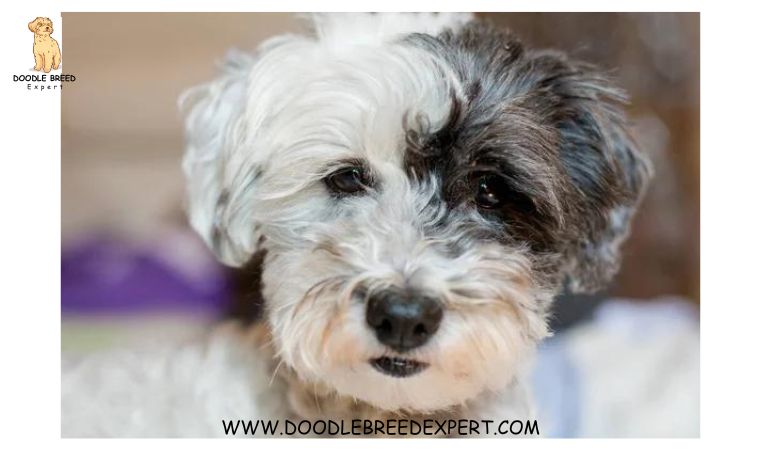
Reasons to Not Purchase an Aussiedoodle
Although Aussiedoodles are incredibly awesome and seem perfect for every person on this planet, there are still a few reasons why buying an Aussiedoodle may not be a good idea.
- Trivial traits: An Aussiedoodle should not be purchased based on trivial characteristics, like eye color or coat pattern. This doesn’t refer to the dog’s temperament and doesn’t say whether the dog is more fit for the pet.
- Shedding Misconceptions: As for these dogs, it is often believed that they are hypoallergenic and do not shed. This is false. This breed’s shedding characteristics cannot be predicted or determined without genetic testing early in puppyhood; most Aussiedoodles do shed. Also, less shedding would not equate to less maintenance because they need regular grooming.
- Expecting a Replica of Previous Breeds: Aussiedoodles were created from Australian Shepherds and Poodles but are not replicas of either parent breed. To expect such a dog to perform or look like a purebred Australian Shepherd would be way too much and likely end in disappointment.
- Size Estimation: Adult size is hard for parents to predict. Adult size and weight depend on many variables and at least a few generations of genetics. Expect some size variance in medium-sized Aussiedoodles.
- Underestimate Intelligence: Aussiedoodles can be very intelligent and trainable. However, they can be strong-willed and independent if natural intelligence starts working against training and structure, which can develop undesired behavior. Expect to put time and effort into training and proving structure.
Over their flair for the breed—that is because in purchasing an Aussiedoodle, superficial traits or those that may have misconceptions about shedding and behavior should be left aside. They should be more realistic regarding what expectations can be made and equipped to make the correct investments in terms of training and overall care that a dog will demand.
Conclusion
In conclusion, Aussiedoodles are the winning combination of smarts, loyalty, and good humor—ideal for many homes. Their hypoallergenic coats and low shedding make them suitable with allergy-prone families, while their highly high energy levels ensure great pets in very active environments. However, much investment in trainability and time for mental stimulation is necessary to channel that intelligence constructively and avoid behaviors caused by boredom.
Proper socialization and consistent training make Aussiedoodles well-mannered and loving additions to any family. Moreover, they are more agreeable from an apartment to an expansive home. This essentially makes the Aussiedoodle one of the most sought-after dog breeds in the world currently because of its mixed personality, which tends to appeal to most dog lovers looking for a loyal, energetic, and versatile companion.
References:
- Arnold, V. L. (2023, December 21). Top 14 Types of Doodle Dogs. PetMD. https://www.petmd.com/dog/care/types-of-doodle-dogs
- Cpdt-Ka, D. D. B. (2024, May 27). Aussiedoodle Dog Breed: Info, Pictures, Facts, & Traits – Dogster. Dogster. https://www.dogster.com/dog-breeds/aussiedoodle
- Clancy, M. (2024, May 2). Aussiedoodle. DogTime. https://dogtime.com/dog-breeds/aussiedoodle
- Aussiedoodle | Veterinary Genetics Laboratory. (n.d.). https://vgl.ucdavis.edu/breed/aussiedoodle
- Kelley, T. L. (2024, April 12). Aussiedoodle. Daily Paws. https://www.dailypaws.com/dogs-puppies/dog-breeds/aussiedoodle


